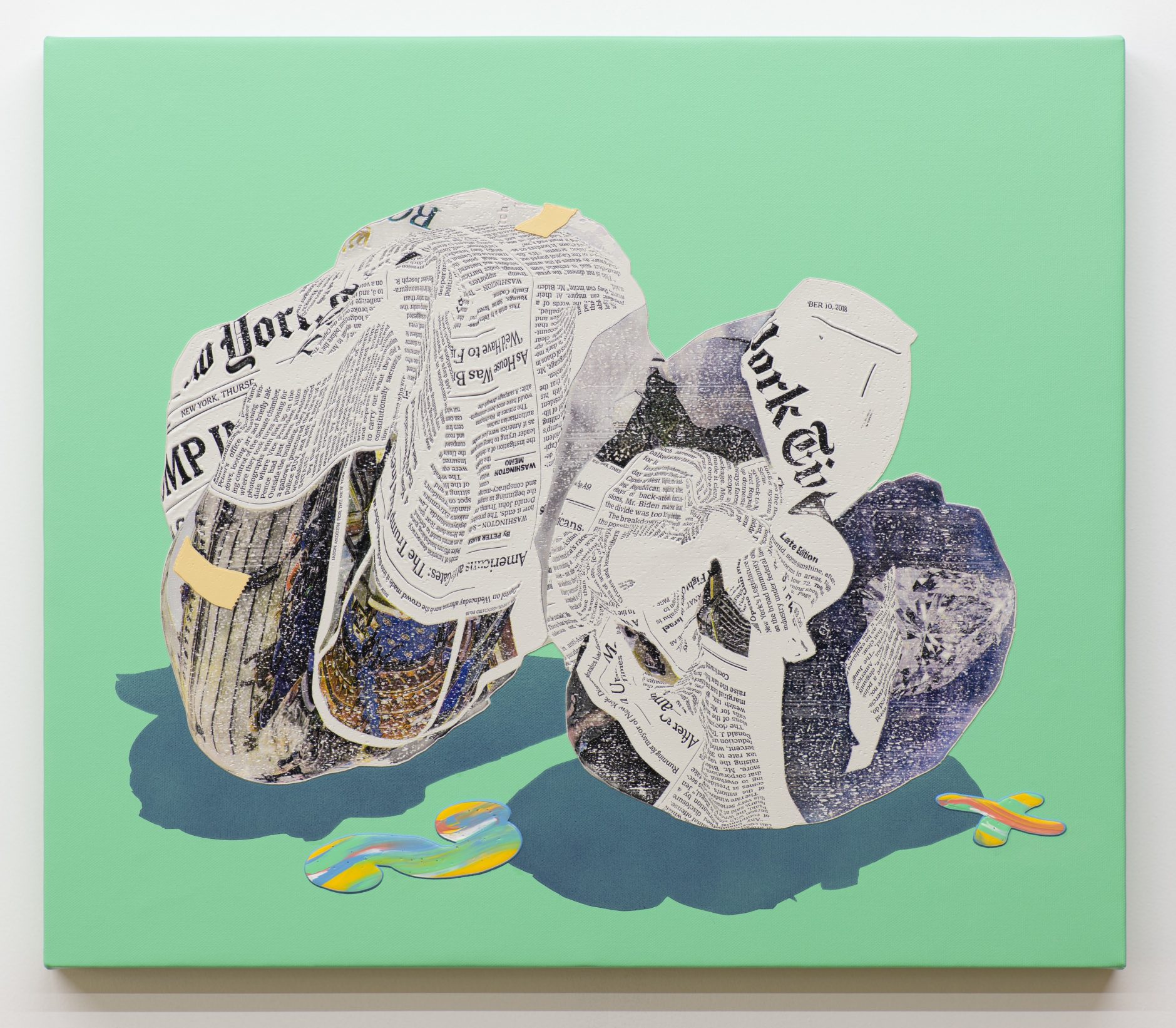Exhibition
Alex Dodge : LAUNDRY DAY : IT ALL COMES OUT IN THE WASH
September 25 - November 7, 2021

Laundry Day: Rag No. 59,109 (Neon Carrot)
2021
oil and acrylic on canvas
31.8 x 41 cm

Laundry Day: Rag No. 58,931 / 59,084 (Spring Bud)
2021
oil and acrylic on canvas
45.5 x 53 cm

Laundry Day: It All Comes Out In the Wash
2021
oil and acrylic on canvas
194 x 162 cm
Maki Fine Arts is pleased to present LAUNDRY DAY : IT ALL COMES OUT IN THE WASH, a solo show by Alex Dodge, starting Saturday, September 25th through Sunday, November 7th, 2021. In his much anticipated second show in Japan, two-and-a-half years since his first show, Alex Dodge will showcase new paintings that combine images of subject matter from his previous works–such as printed material including The New York Times–with images of textile, patters, clothing, and fabric.
—
Between the Second and Third Dimension
Hitoshi Dehara (Curator, Hyogo Prefectural Museum of Art)
In his previous show at Maki Fine Arts, The Trauma of Information, the majority of Alex Dodge’s motifs were fabrics and newspapers that have been crumpled up or used for packaging–exactly the type of shapes that stimulate visual illusions. The contrast between the original shape and the warped shape helps our brain discharge the idea of three-dimensionality. The motifs are drawn alone on canvas without a background and emanate a certain amount of thickness. The oil paint is applied thickly using overlapping brush strokes and topped with stenciled text and patterns, which help flesh out the three-dimensional illusion even further. At close inspection, however, we see that some paint mounds don’t align with the illusionary irregularity of the newspaper’s surface and others bring attention to the flatness of the canvas used as foundation. They are neither uniform nor reduced to the augmentations created by the illusion. Therefore, our eyes end up wandering between the two perceptions: the three-dimensional (the thickness) and the two-dimensional (the three-dimensional illusion). Within this small little world, the universal riddle of visual arts–the difference between two perceptions–unfolds. These works should be seen as paintings that are fortified through precise planning and pliable positioning.
The artist uses computer-generated images through 3D simulations. His laser-cut stencils were influenced by Japanese stencil-dying techniques. Cutting-edge technology vs. traditional craft; west vs. east; art vs design; and painting vs. wood-block printing. In the hands of Alex Dodge, these seemingly opposite and contrasting (or strategically displayed) terms are effortlessly built into his creations according to his intent. For example, until the technique of Japanese stencil-dying is brought up, the viewer has no inkling of its influence in his works. Through high-tech support and intellectual planning, his works generate the visual surprise we experience.
In his recent works, Dodge has chosen motifs of day-to-day consumer items. The subtle existence of these items passing through our eyes surely help us find modernity and meaning, but it also echoes poetry. Poets compose a world of text independent from reality. Likewise, Alex Dodge accomplishes something similar through his paint brush.
—
Alex Dodge
Born 1977 in Denver, Colorado, Alex Dodge currently works from Brooklyn, New York, and Tokyo, Japan. His recent shows include Alex Dodge (solo, Klaus von Nichtssagend Gallery, 2020); The Trauma of Information (solo, Maki Fine Arts, 2019); Programmed: Rules, Codes, and Choreographies in Art, 1965-2018 (Whitney Museum of American Art, 2018-2019); and Whisper in My Ear and Tell Me Softly (solo, Klaus von Nichtssagend Gallery, 2018). His works have been added to collections at The Museum of Modern Art, Whitney Museum of American Art, The Metropolitan Museum of Art, and Museum of Fine Arts, Boston.

